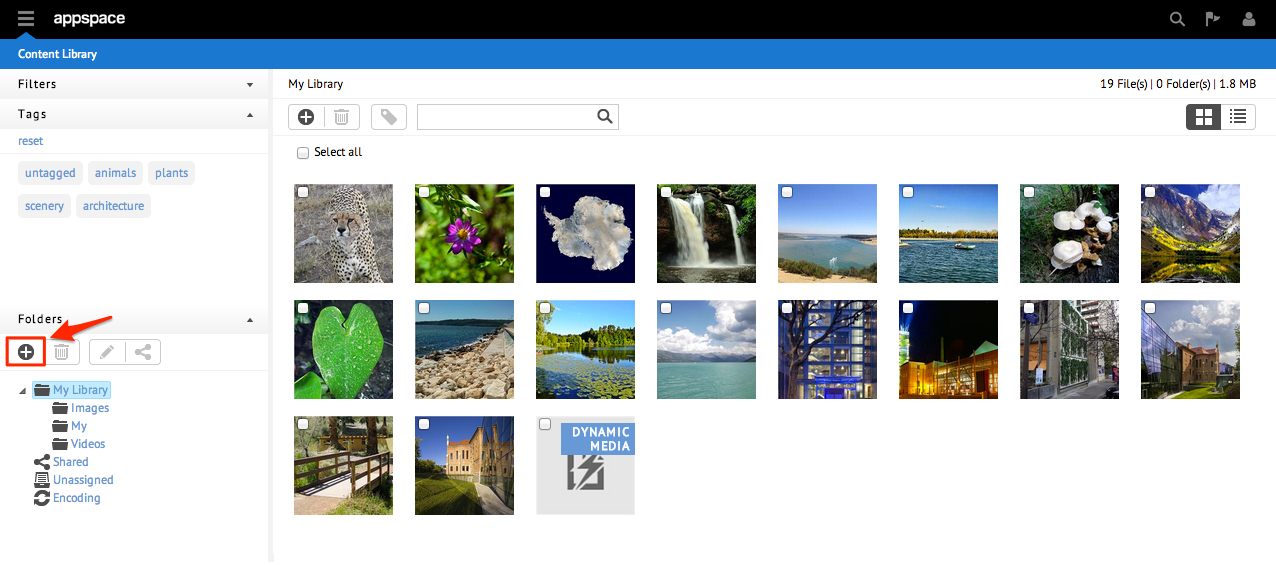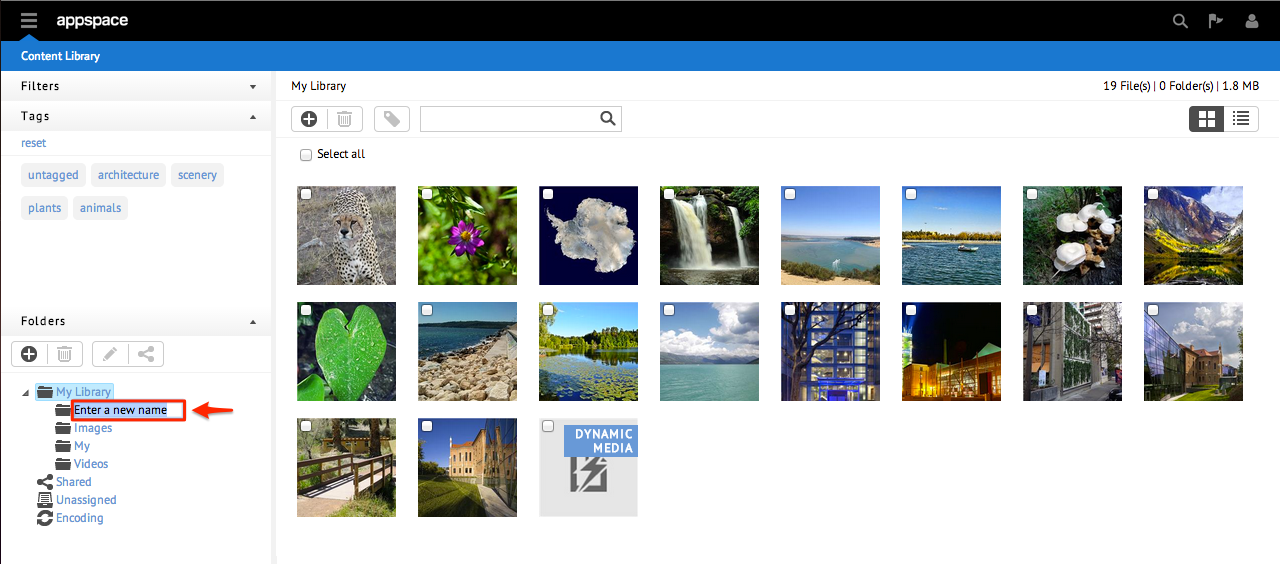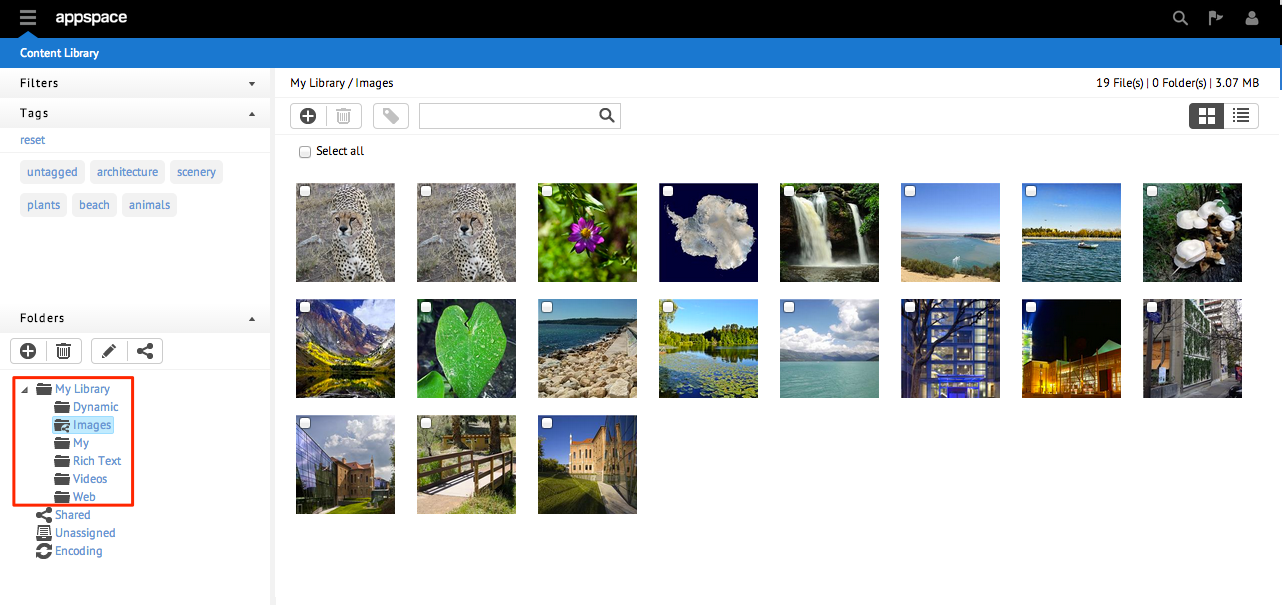The purpose of this guide is to quickly bring you up to speed with the Content
Library extension. To do so, we will cover three key sections:
Section 2: Manage your Content
This section covers the uploading, tagging and adding of content metadata.
Uploading Content to a Folder
Now that you’ve got your folder structure, you’ll want to upload content to
those folders.
Step 1
From the Content Library, select your folder you wish to add content to. Click
the + button to add a new item and select Upload Local File.
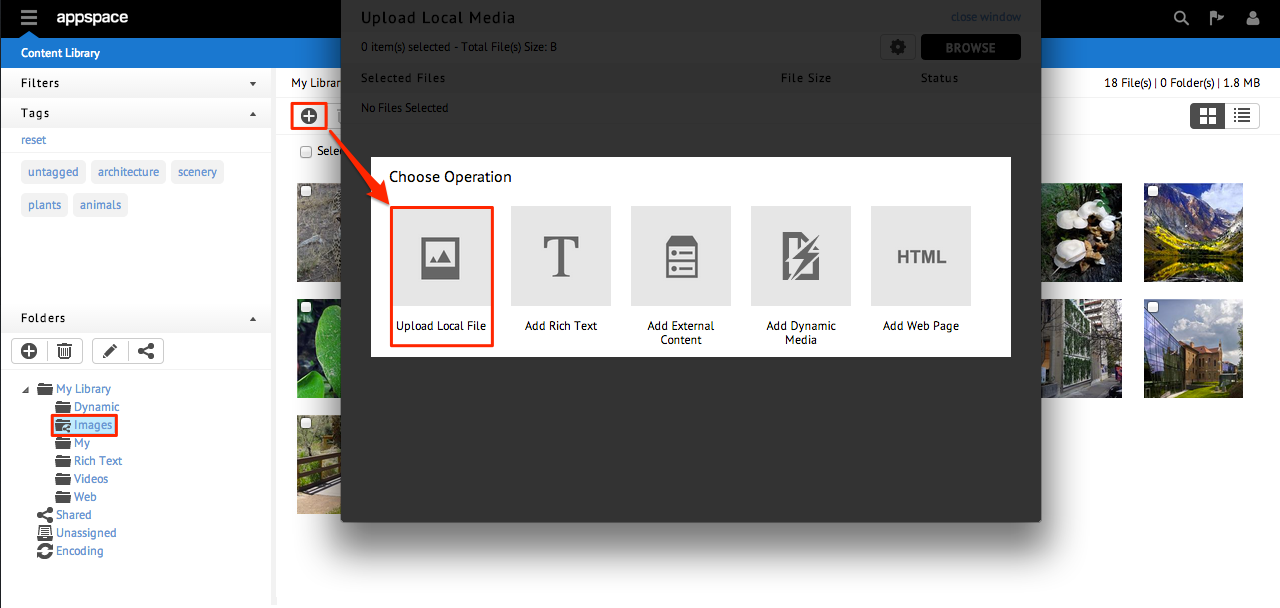
Step 2
Click Browse and select the content to be uploaded.
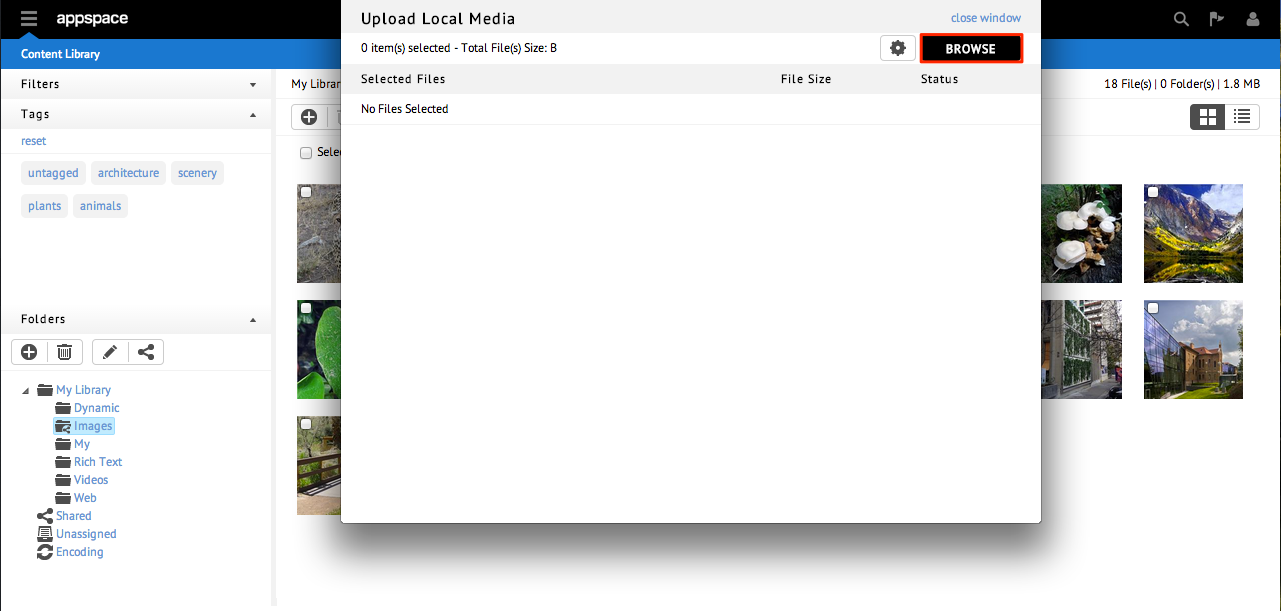
Note
You can select multiple items at once during the upload process. This
can be accomplished multiple ways, such as with shift + click to select several
items.
Tagging your Content
Tagging your recently uploaded content will help in searching for it later.
Step 1
From the Content Library extension, select the content you wish to tag. You can
also choose to select multiple items to tag.

Step 2
Select the tag button.

Step 3
Type in your new tag name or select from the list of existing tags. Click Apply
to tag the selected content.
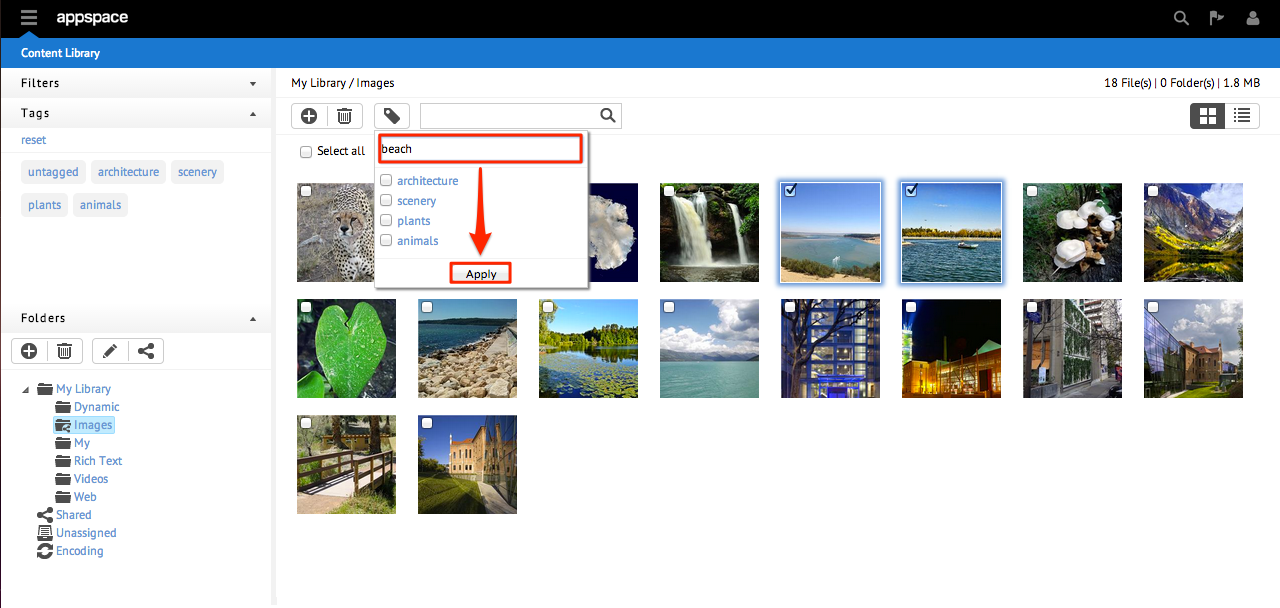
Adding Content Attributes (Metadata)
You can add additional metadata to add descriptions and titles to the content
asset which in turn can be used through application scripting.
Step 1
From the Content Library extension, search for and double-click the content you
wish to add metadata to.
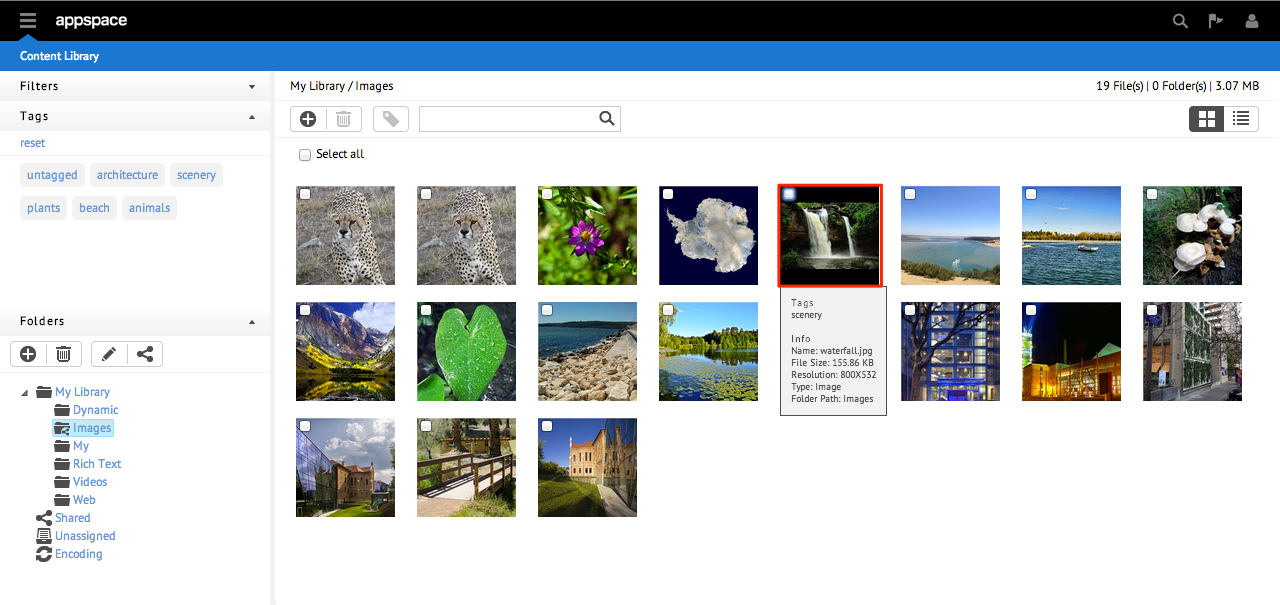
Step 2
Under the Content Properties sub-tab, add in the content item’s title,
description and tag(s) for organisation and searching purposes.
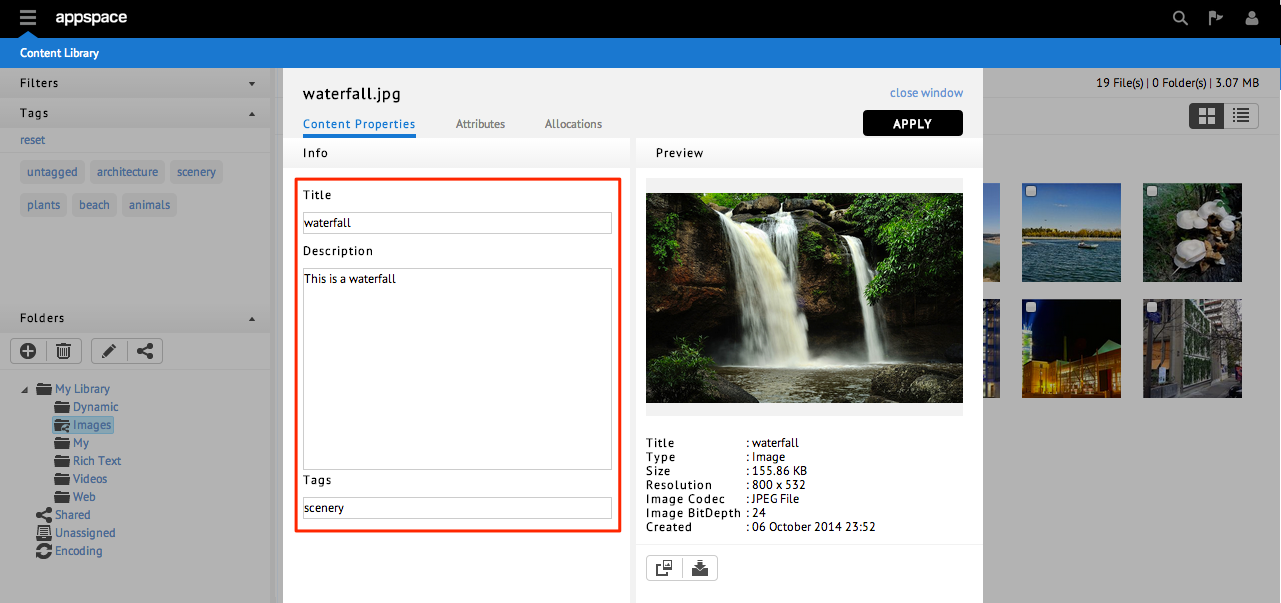
Note
You are able to use the content item’s title and description through
action scripting. E.g. On media load, set plain text to content items title.
Step 3
You can also add additional information to the content item by going to the
Attributes sub-tab. Click APPLY when finished.
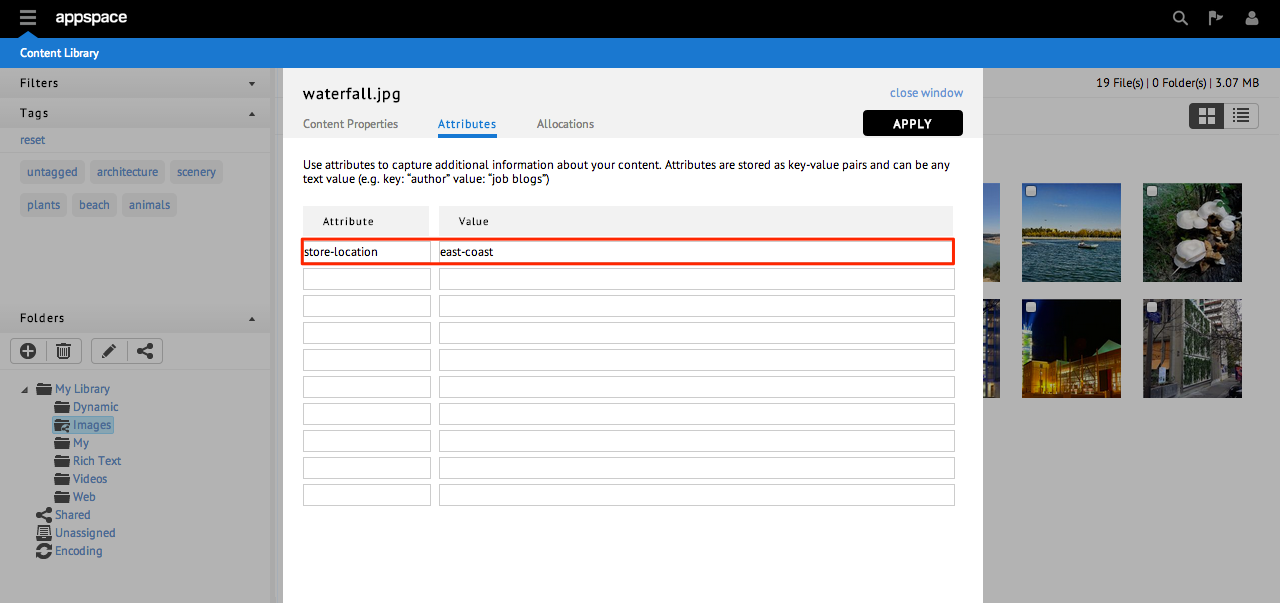
Note
These attributes cannot be accessed through action scripting. They
are used primarily to provide additional identify information to the content
item.
Section 3: Share your Folders
Should you decide to, you can grant other Appspace users/user groups access to
your folders by sharing them. You are able to share your content at multiple
levels:
- Globally - all users in all accounts will have read and write access to the
shared folder.
- All user groups (read only) - all user groups in the account will have read
access to the shared folder.
- All user groups (read and write) - all user groups in the account will have
read and write access to the shared folder.
- Custom - you can define which access level (no access, read only, read and
write) to specific user groups in the account.
Step 1
From the Content Library extension, click the folder you wish to share.

Step 2
Click the share button.

Step 3
In the share window, select your sharing options. If you select custom, the
dialog window will display all user groups in the account. You can then proceed
to set your sharing options per user. Click Save when done.
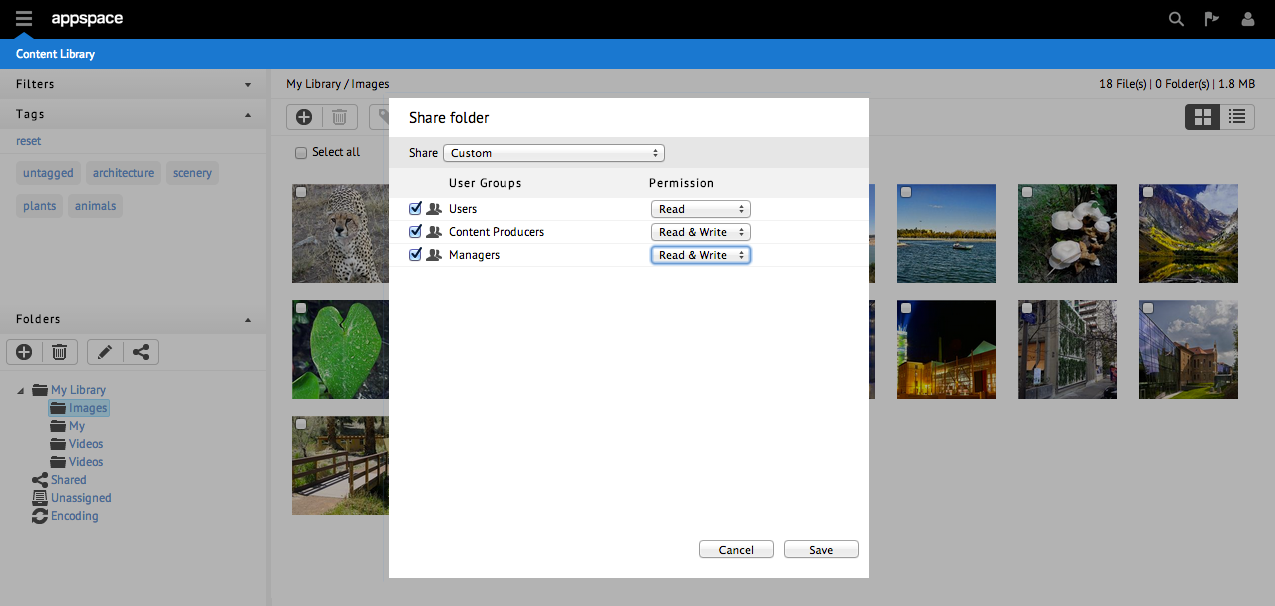
Step 4
The shared folder will now be denoted with a slightly different “shared” icon in
the tree hierarchy. This visual representation provides users a quick check as
to which folders are currently being shared.
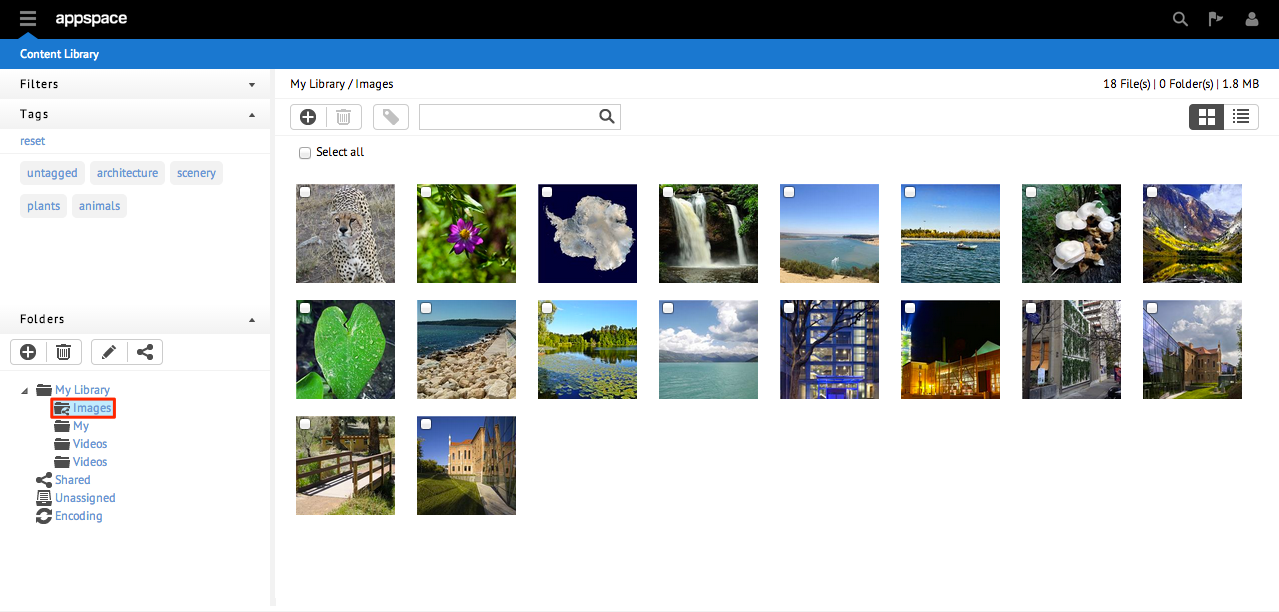
Step 5
In order for a user (within the user group selected in the previous step) to
view the folders that have been shared with them, look for the shared folder
within the folder tree hierarchy.


